-
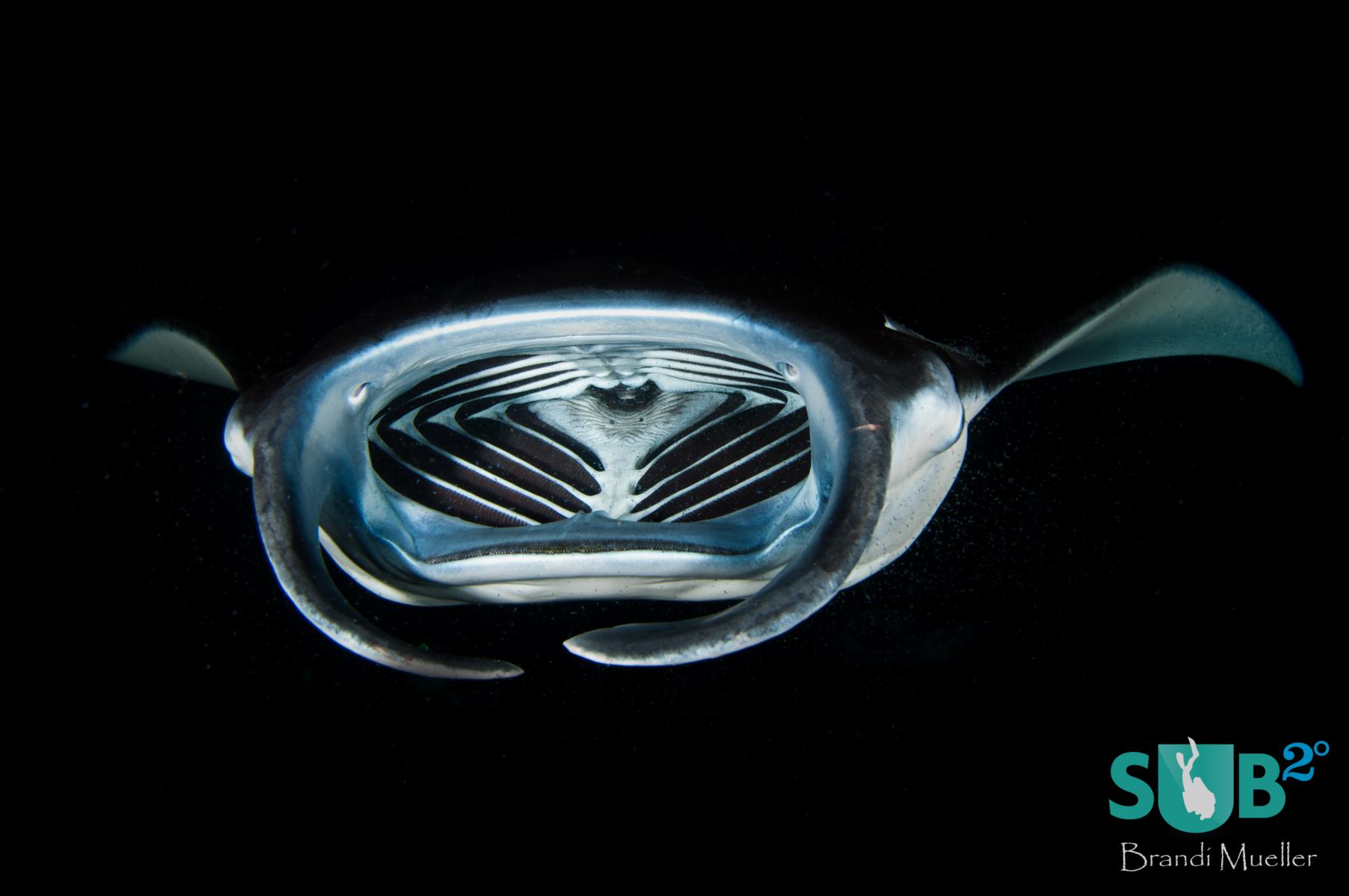
Open Wide!
Dive operators estimate the mantas show up at Garden Eel Cove 80% of the time. Sometimes it’s only one or two mantas that come to feed, but some nights ten to twenty mantas show up. The most seen in one night is 42! -
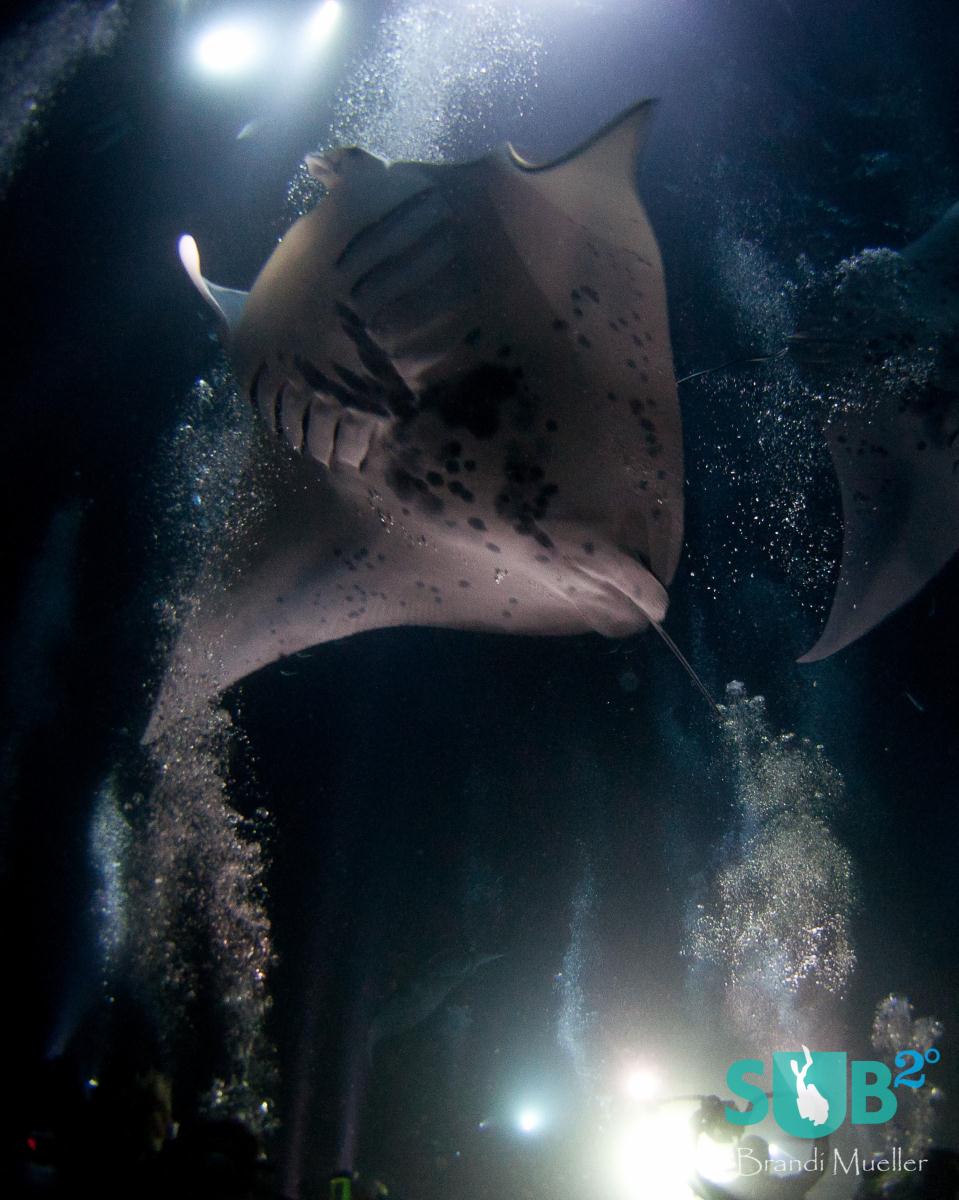
Open Wide!
Dive operators estimate the mantas show up at Garden Eel Cove 80% of the time. Sometimes it’s only one or two mantas that come to feed, but some nights ten to twenty mantas show up. The most seen in one night is 38. Even when there are less than 42 mantas it’s an amazing dive because the mantas stay at the circle feeding all night and will to ballet-like circles over and over again above divers. -
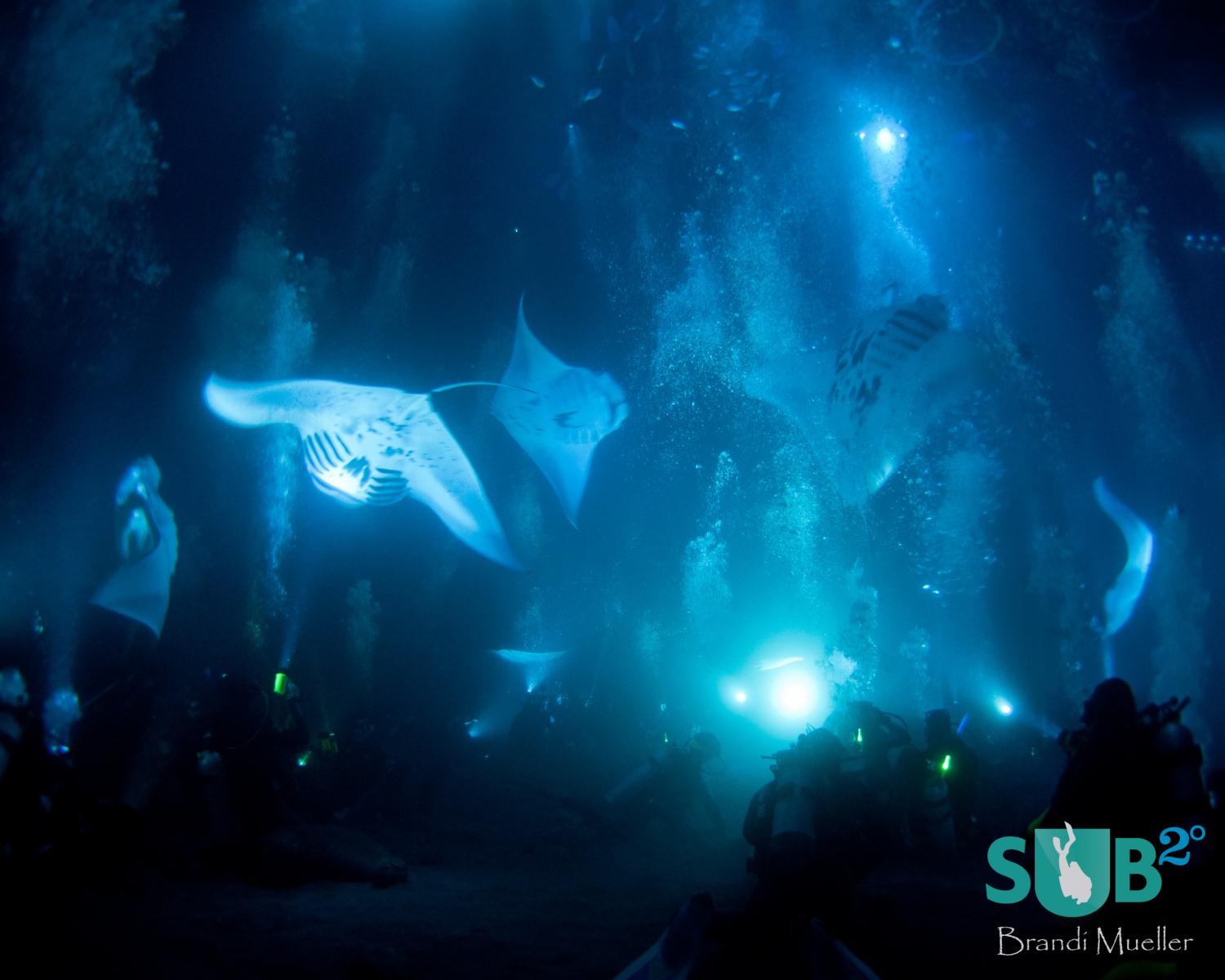
Manta Ray Night Dive
Even though it’s a night dive, it is a very bright dive. Dive shops put buckets of LED lights down each night and divers all carry bright lights to attract the plankton. The more light means more plankton, and more food means more mantas. The mantas usually spend the whole dive at the circle very close to divers and they only leave once the divers and their lights leave. -
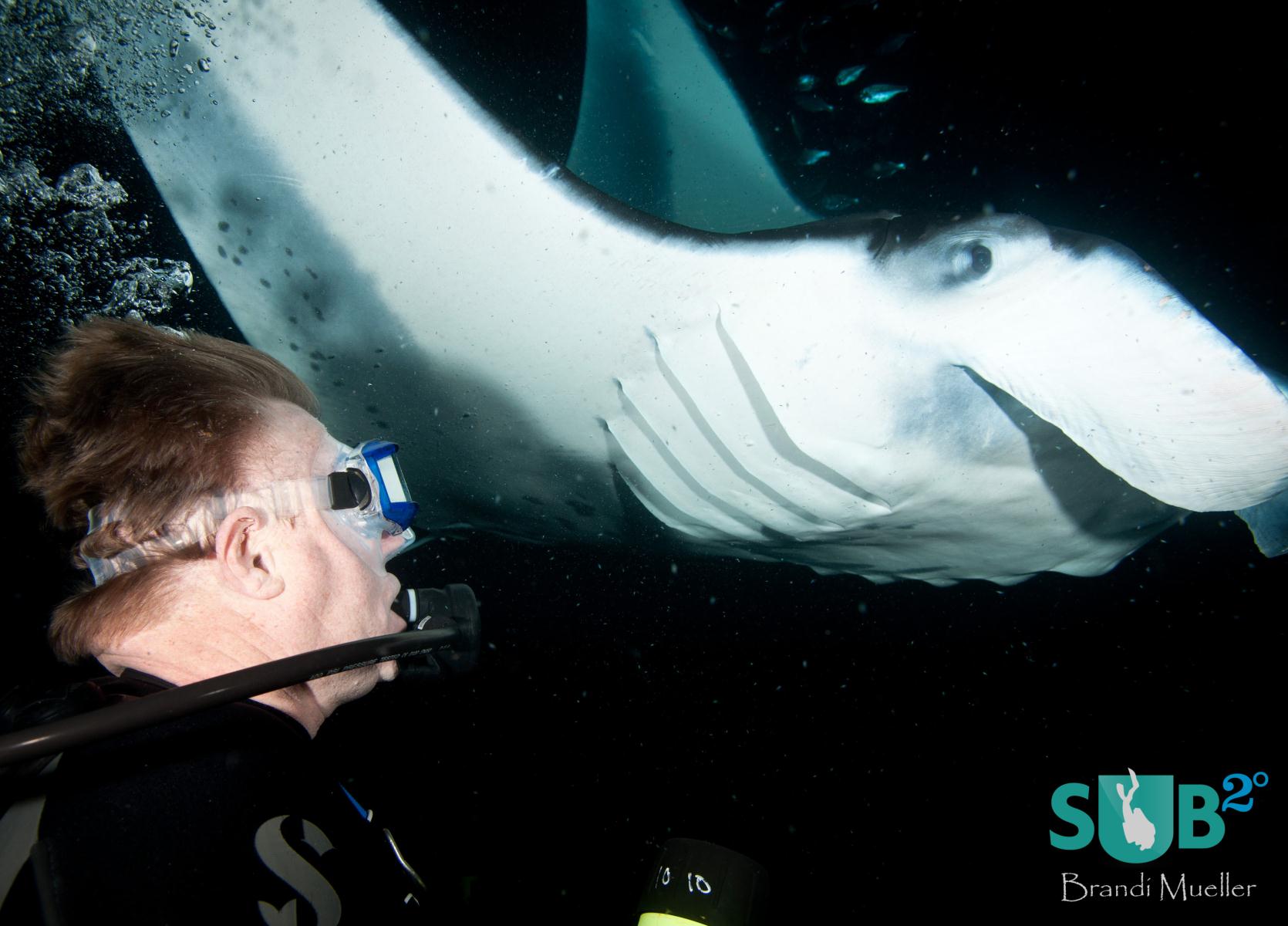
Diver with Manta
During the manta ray night dive the mantas come very close to divers because they are feeding on plankton attracted by lights. Divers hold flashlights and buckets of lights are placed in the center of the circle. Although the mantas might bump a diver, divers are asked not to touch mantas because they are coated in a thin mucous layer that protects them from parasites and bacteria that can be rubbed off.
Kona's Manta Ray Night Dive
How It Began
Over 30 years ago, an oceanfront hotel on the Kona coast of the Big Island of Hawaii shined spotlights on the ocean for their guests to enjoy.
They never expected what happened next.
The lights attracted plankton, which happens to be the favorite food of manta rays, and the plankton congregation attracted mantas that started showing up nightly to feast on the free buffet.
Not surprisingly, the mantas attracted divers.
The hotel has long been shut down- it is now the home of the Sheraton Kona Resort- but the Kona dive shops decided to move the dive and set up a ‘campfire’ of lights just south of the Kona airport at a dive site called Garden Eel Cove.
Many years later, this dive continues with the help of a large box of LED flashlights; plankton, mantas, and divers still congregate nightly for one of the most amazing night dives in the world.
Legendary Night Dive
Often considered as one of the top diving experiences, this dive probably gives divers the best chance to see and get close to these beautiful, huge mantas. Dive operators estimate there is at least an 80% chance of seeing the mantas each night; sometimes just one or two, and some nights 10-20 mantas.
The dive is an easy dive as far as experience goes.
Most operations have a day time or twilight dive at the same site before the night dive, giving you a chance to get familiar with the site. Mantas are often seen on the day dives either being cleaned or just checking out divers! The entire night dive is spent at the ‘manta circle’ or ‘campfire.’
Divers get in a circle and kneel or sit throughout the dive in about 35 feet of water. With the help of boxes of lights and each diver holding a flashlight above their heads, the plankton will increase and the mantas come to the circle to feed.
Rules
There are a few special rules for this dive to keep the mantas safe.
Touching the mantas isn’t allowed, as they have a delicate mucous coating that protects them from bacteria and parasites and we could rub that off.
Snorkels are prohibited for the same reason, as the mantas can come in very close and sometimes bump the top of your head, trying to get every last bit of the plankton cloud your light as brought in. They might touch you, but please don’t attempt to touch them.
Divers are also prohibited from swimming in the water column. The mantas do a graceful and beautiful ballet-like dance while they are feeding, and they do what looks like belly roll swoops or circles.
They can bump into divers swimming, which could injure them or scare them away.
Some Interesting Facts
The mantas' tails have no sting, although they are related to Stingrays (also Eagle rays), and they can weigh up to 3,000lb with wing spans larger than 20ft. Most of the Kona mantas are 8-12ft across.
Their strange mouth parts are called cephalic fins, which are used to funnel water and plankton into their mouths. The cephalic fins curl up when they’re not feeding and look similar to horns.
The newborns' wing spans are usually around three feet across.
Like most shark species, mantas are ovoviviparous, which means they produce live young hatched from an egg, so the baby is hatched in the female’s oviduct and then they remain inside the mother until fully developed.
The dive site has also provided a unique opportunity for researchers. This was one of the first places divers and scientists could reliably see and study mantas.
Each manta that comes to the night dive has been identified and named by its unique black and white markings on this underside. And if you are lucky enough to photograph an unknown manta, you get the honor of naming it!
Dive shop staff have been keeping tabs on which mantas show up each night, creating probably the largest and longest collection of manta sighting data in the world.
The first identified manta was Lefty (named because of her broken left cephalic fin) in 1979 and she still shows up to the manta circle often. Now there are more than 200 named and identified mantas in Kona and the trend for identifying has caught on worldwide.
Manta rays recently became protected in Hawaii, largely due to the research and work of the Manta Pacific Research Foundation, but they are not protected worldwide.
So how can you join in on this amazing dive?
Kona’s manta ray night dive happens every night at Garden Eel Cove and there are several dive operators who take divers to this site and the Kona Aggressor liveaboard visits it weekly as part of their week long charters.
The old hotel site in front of the Sheraton Hotel is also occasionally visited, although usually has less mantas than Garden Eel Cove. It is also possible for non-divers to snorkel the site and most dive shops offer both ways of seeing the mantas.
The mantas tend to stick around as long as the divers, and their lights, do. Usually it’s the divers saying goodbye to the mantas first due to their tanks emptying, but the mantas will stick around and feast all night if given the chance. The dive is truly an amazing experience bringing these beautiful, huge, creatures so close to divers.
Further Reading
Directory of Dive Shops in Hawaii
Directory of Dive Sites in Hawaii
Featured Posts
-
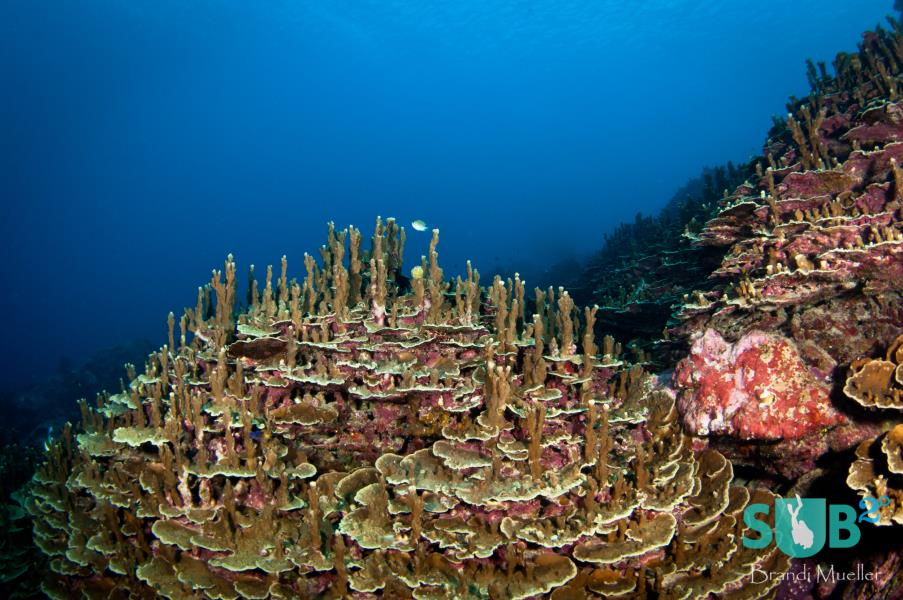
The Unique Diving of Guam
Often overlooked, the island of Guam is surrounded by fantastic diving. White sand beaches and calm, clear waters invite divers to explore the ocean and see the healthy coral and plentiful fish populations below.
-

Papua New Guinea's Milne Bay
Papua New Guinea is one of the world's best dive destinations and Milne Bay offers fantastic reef diving and muck diving in the same location. Clear waters and phenomenal creatures make for an excellent dive trip that’s enti...
-

Sharks of the Bahamas
Shark feeding dives are no longer just for the avid diver or thrill seekers. Bahama's crystal clear waters are the best environment to come nose to nose with a frenzied school of sharks after they smelled the chum.
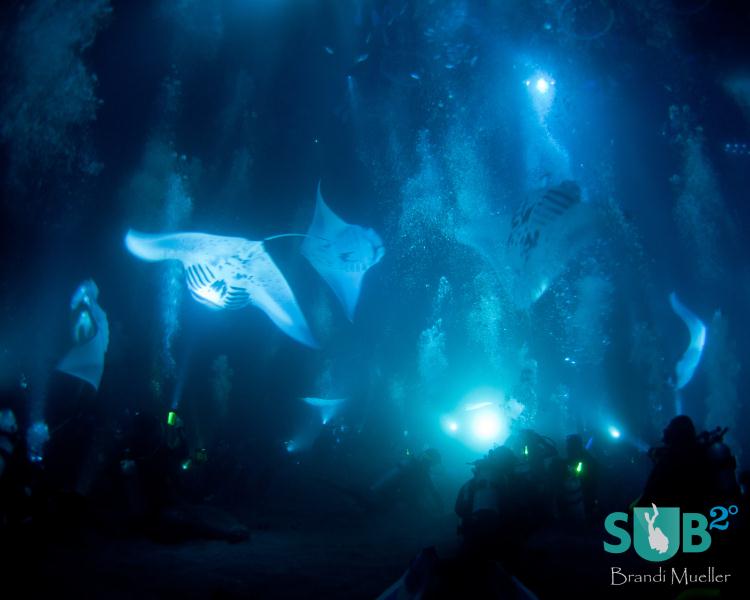
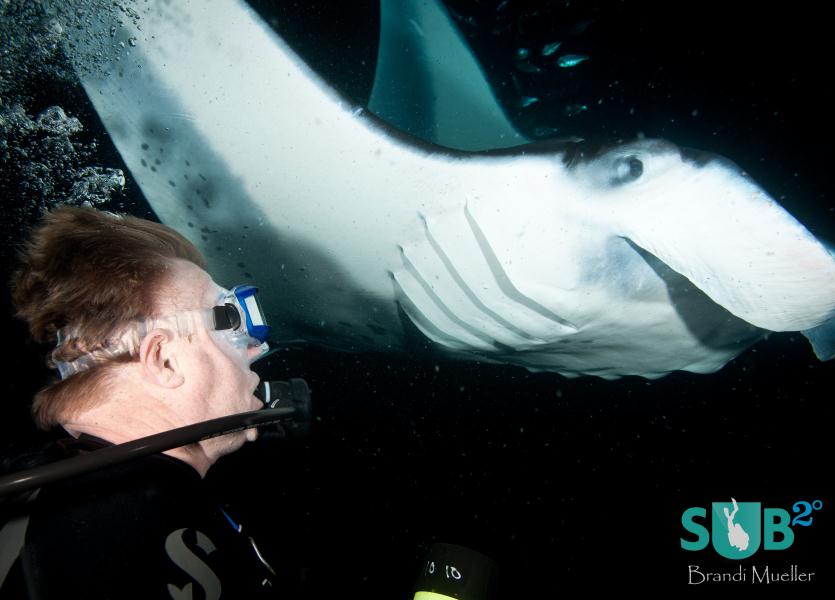
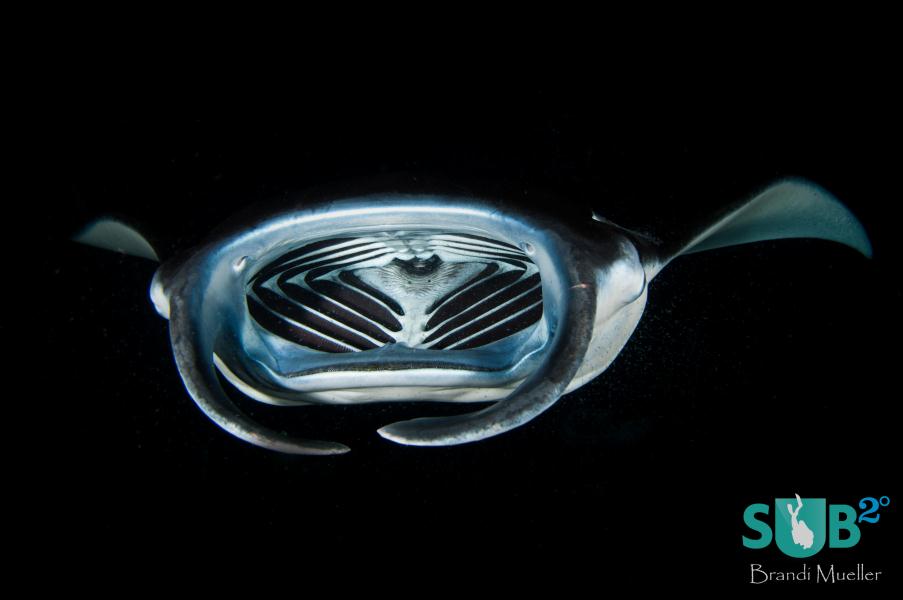
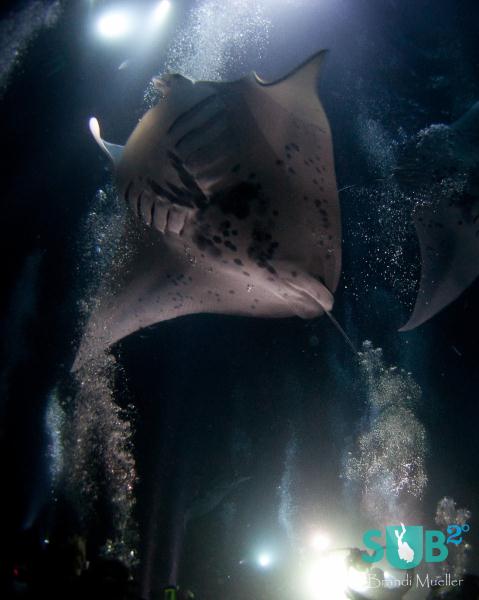


Load more comments
Indah Susanti 12/21/2014 9:32:53 AM Stunning experience! Must be amazing feeling to see these majestic species at night time. Thanks for the post!
Shirley 2/4/2020 7:00:33 PM I have never been involved in night diving, but after this article I will probably begin to prepare for them. Manta deserves it!I never dived at night, but after this article, I will probably begin to prepare for this. Manta deserves it!